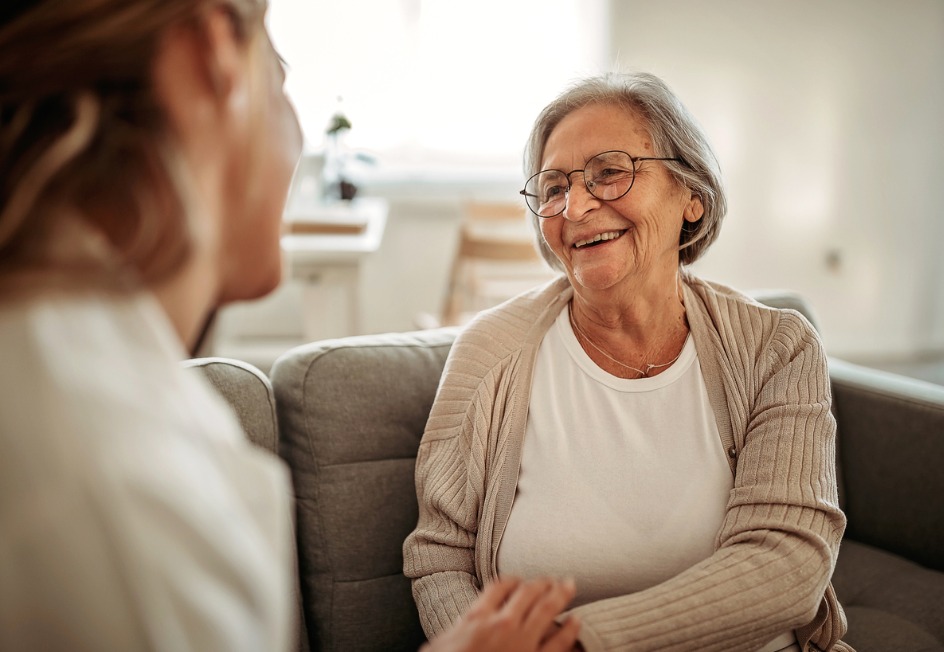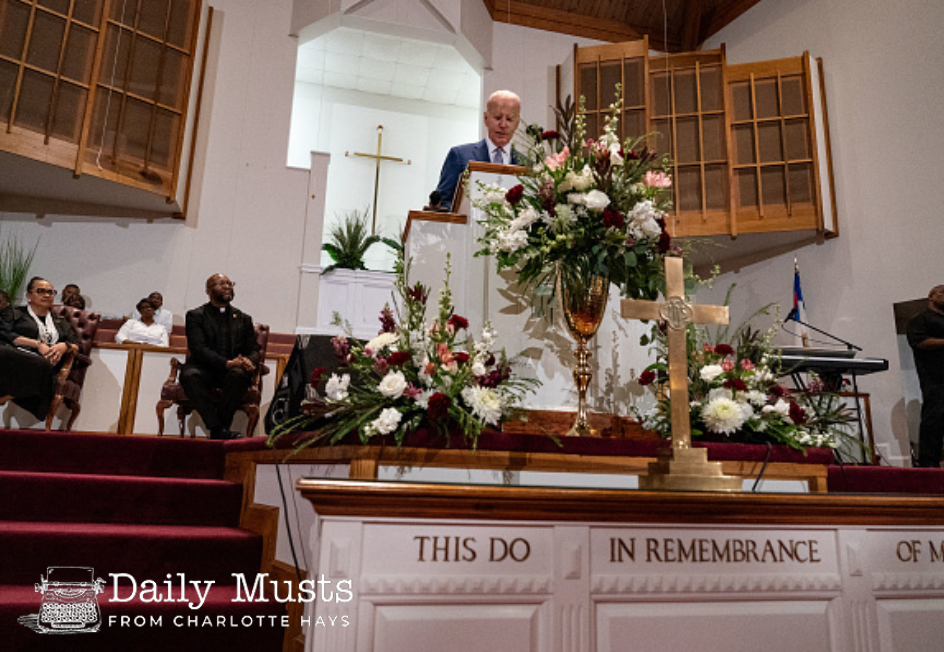Every month, IWF releases a policy focus on issues affecting women and their families across the country. As valued members of IWN, we want to give y...
Issue: Health Care
Hope for Caregivers: Solutions for America’s Coming Eldercare Crisis
This op-ed is part of a series about Forgotten Women—financially insecure women between the ages of 50 and 65—and policy solutions that can offer them hope. Learn more about the Hope Agenda from Independent Women’s Voice here. Originally appeared in RealClearHealth.
From 2022 to 2050, the number of Americans aged 65 and older is estimated to increase by 47%. By 2030, every Baby Boomer will be 65 or older, making up about one in five Americans. At least 50% of these adults will need caregiving.
While more than 37 million people provide unpaid elder care, this care predominantly falls on women (59%), many of whom have to decrease their working hours or quit their jobs entirely to focus on their loved ones. Particularly growing is the “sandwich generation,” around one-quarter of Americans, that cares for two generations, often on top of full-time jobs.
It’s no surprise that these “sandwiched” women are full of financial fear and anxiously, waiting for better policy solutions. New polling from Independent Women’s Voice shows that 89% of women want leaders to offer financial solutions for people who can’t find new work, but can’t yet afford to retire. To offer hope to these women, we must address the looming eldercare crisis of dying broke or dying alone.
Despite this increased demand for elder care, the supply of workers and facilities has not kept up. Since February 2020, the eldercare industry has lost over 14% of caregivers, and over 500 nursing homes shut down during COVID-19. Over half of nursing homes have limited new patients, and many did not adequately protect patients from the pandemic.
Due to increased demand, limited supply, and an increase in regulations, elder care grows more costly with each passing year. Looking at all long-term care options over the last two decades, the median annual cost has increased faster than the rate of inflation.
At the same time, more than two-fifths of Baby Boomers have no retirement savings. Most adults (90%) do not think they could pay the average cost of a nursing home or a paid nurse or aide for one year (83%).
Faced with this reality, the Boomer generation rightly worries about “dying broke” and dying alone. Many rely on Medicaid, which only guarantees coverage of one type of care—nursing home care. The vast majority of older adults (92%) would prefer to receive home-based services, which are often less expensive and improve patient outcomes.
Many family members are happy to provide unpaid elder care, but rising costs and balancing responsibilities make it difficult to do so. Around half of those in the “sandwich generation” struggle to cover basic essentials and have taken on credit card debt in the thousands of dollars.
Over the past few months, I have had a firsthand look at the challenges of elder care through my friend who lives in a New York City nursing home. She is hoping to transition to home-based care, but faces the difficulties of bills, government bureaucracy, and complex government insurance policies.
I am learning the rewarding, yet demanding, role of caregiving—which could easily be a full-time job in and of itself—along with balancing a full-time job and other personal priorities.
To address the financial and accessibility challenges of elder care, like those my friend has faced, policymakers should avoid expensive one-size-fits-all eldercare options.
Instead, we should encourage creative, fiscally sound solutions. Any policy solutions will need to recognize that many families would prefer for their elderly loved ones to stay in their unpaid care at home, rather than use facility-based care. One such success story is Arizona’s “Hospital at Home” program, which deserves imitation nationwide.
Another innovative option is to expand the au pair program to include helping older adults. In exchange for offering au pairs the opportunity to live in their homes and experience American culture, American families receive full-time, affordable, and reliable child care from a foreign au pair. The average monthly cost for an au pair, which includes room and board, other living expenses, and a weekly stipend, is significantly less than the cost of assisted living, home care, and nursing homes.
America could also adopt the model of “dementia villages,” where dementia patients are integrated into their local intergenerational community instead of siloed into nursing homes or assisted living facilities.
These options would bridge ties between older and younger generations and help fight against social isolation and loneliness, which are linked to premature death and risk for dementia, heart disease, and stroke. Isolation especially affects older women.
Encouraging these options will necessarily involve reducing bureaucratic regulations that are not essential to the safety and well-being of seniors.
With more and more Baby Boomers reaching age 65 every year, the need for affordable and innovative eldercare options will only expand. As with child care, education, and workplace choices, a one-size-fits-all eldercare option does not work and is not best for aging Americans. Aging Americans, and the loved ones who manage their care, deserve better, more diverse solutions that offer more security and real hope.
Makenna McCoy is the policy coordinator at Independent Women’s Voice (iwv.org).
Healthcare Transparency Can Offer Hope For Better Financial Security
This op-ed is part of a series about Forgotten Women—financially insecure women between the ages of 50 and 65—and policy solutions that can offer them hope. Learn more about the Hope Agenda from Independent Women’s Voice here. Originally appeared in RealClearHealth.
Addressing healthcare costs and uncertainty is key for women and all Americans, especially those heading toward retirement, when healthcare costs increase substantially. New polling from Independent Women’s Voice identified that 89% of women are looking for leaders to offer financial solutions for people who can’t find new work but can’t afford to retire. More transparency and flexibility in our healthcare system could offer greater hope and security to this group. And indeed, no surprise, since nine in 10 Americans say they support requirements for transparency in healthcare prices.
Kaiser Family Foundation’s (KFF’s) December polling found nearly half of U.S. adults say it is difficult to afford healthcare costs, and one in four adults skipped or postponed obtaining needed health care in the past year because of costs. KFF found 61% of uninsured adults said they went without needed care because of cost.
About one in five adults (21%) told KFF they did not fill a prescription, and about one in 10 say they cut pills in half or skipped doses of medicine in the last year because of cost.
Transparency would introduce greater competition and lower costs greatly in the healthcare sector, something we need particularly as our country ages. Requiring hospitals and healthcare providers to share all pricing information publicly allows patients to shop around or at least plan for healthcare expenses. Women make most healthcare decisions and use more health care than men, so this affects us more.
Yet just 36% of hospitals fully comply with transparency rules, according to PatientRightsAdvocate.org’s latest Compliance Report. The Department of Health and Human Services only assessed fourteen penalties against noncompliant hospitals, and the charges are just slaps on the wrist that might as well say “just keep ignoring the rules.”
An astronomical 90% of the public supports healthcare price transparency. The Trump administration took action to require healthcare providers to disclose their prices, starting in 2021.
In the U.S. Senate, the Braun-Sanders Health Care PRICE Transparency Act 2.0 would increase penalties against non-compliant healthcare systems. This bill requires actual prices up front, and is a much-needed bill.
Making health insurance plans portable from job to job empowers and funds patients over systems. Ultimately, this means unchaining employees from employers for insurance.
Women increasingly value flexibility in their workplace environments, including working as independent contractors. But supporters of reclassification of workers from independent contractors to W-2 wage earners use the fact that independent contractors lack benefits as an excuse for taking away that freedom. But better than taking away choice and employment through forced reclassification efforts is a third way: portable benefits.
Portable benefits are benefits attached to the worker—not the employer—and move with the individual from job to job. This is critical for freelancers and gig economy workers who do not have employer-based health care.
Both red and blue states have introduced portability reforms. Utah became the first state to pass such a reform in April 2023. According to the final bill, contributions to portable benefits must be voluntary, and benefits can follow the worker without affecting their worker status. In Massachusetts, lawmakers introduced legislation to establish a portable benefits system for all flexible workers and also allow rideshare drivers to maintain their 1099 worker status should a portable benefits program be created in Boston.
Interest in establishing a portable benefits system isn’t isolated to the states. There’s a bipartisan and bicameral interest in Congress to establish a $20 million pilot program to direct the Department of Labor to “incentivize states, localities and nonprofit organizations to experiment with portable benefits models.”
Another way to expand the portability of health benefits is to expand eligibility of health savings accounts (HSAs). Today, only about 10% of Americans can use HSAs under an “HSA-eligible” insurance plan. HSAs are personal health savings accounts that some of your pre-taxed income can go into, along with possible contributions from your employer and family members, to cover certain medical bills. By expanding HSA use, the default model in Singapore, Americans will be empowered to cut out third-party insurance fights. Singapore has higher quality and lower cost health care thanks to widespread use of HSAs. Of course, HSAs don’t work unless you have real, upfront prices, too.
In America, health insurance adds an additional “cook in the kitchen” that hikes up prices. Sen. Rand Paul, R-Kentucky—a Duke-trained ophthalmologist—correctly noted that Lasik eye surgery, deemed elective and not covered by many insurers, illustrates consumer power increasing over time because of price transparency driving prices down.
A Mises Institute study reported, “In 1997, a precursor to LASIK surgery that involved the surgeon wielding a knife cost $8,000. In 2012, a safer laser-guided surgery cost only about $3,800. Prices halved in 15 years even as quality rose.” The same is true for other types of elective, cosmetic surgeries not covered by insurance, and where actual prices can be seen in advance, reports economist Mark J. Perry from the American Enterprise Institute.
The Trump administration prioritized lowering the cost of prescription drugs, including speeding generics to the marketplace, and an update to Medicare’s drug-pricing dashboard to increase transparency. President Trump’s Council of Economic Advisers reported, “The prices for prescription drugs fell 0.6% during the 12 months [of] 2018. This is the largest decline in prescription drug prices in almost half a century (46 years).”
Enforcing and expanding existing rules on healthcare price transparency and expanding the portability of health insurance coverage (including increasing eligibility of HSAs) will drive down healthcare prices and save money for patients and taxpayers alike.
As America’s median age increases and healthcare costs continue to rise, America’s forgotten women know failing to act is not an option and want to know which politicians will take this seriously.






